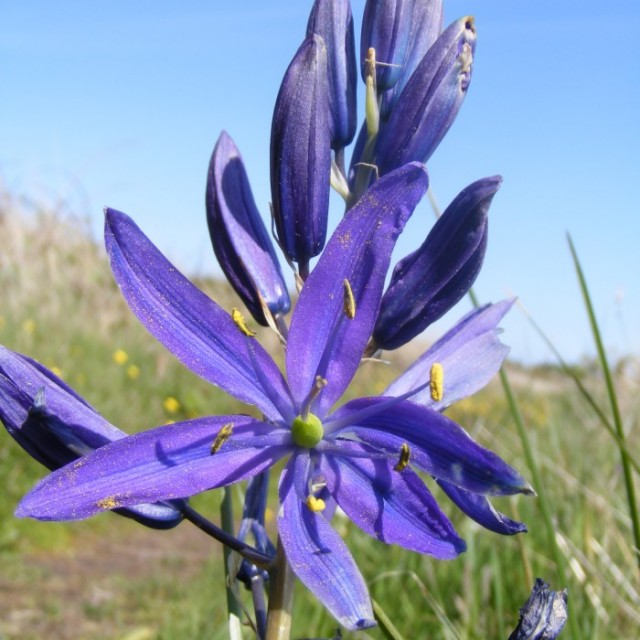COMMON NAME
Common camas
SCIENTIFIC NAME
Camassia quamash
ALSO KNOWN AS
Camas
Plant family
(Asparagaceae)
Plant group
Wildflowers and Herbs
2 reports
Identification hints
Common camas is a stout, robust, 12-28 inches (30-70 cm) tall plant with a dense inflorescence. Camases are liliaceous, perennial herbs that grow from an edible bulb. The leaves are long and narrow, grass-like, and emerge from the base. The flowers are light to deep blue; more than 3 flowers in an inflorescence may be open at one time. Flowers have 6 tepals, 6 stamens, and 3 stigmas. The inflorescence is a spike-like cluster borne on a leafless stem that is held above the leaves. Common camas is distinguished from great camas (Camassia quamash ssp.quamash) by the following: the flowers are slightly irregular, with the lowest tepal curving outward away from the stem; the anthers are bright yellow; the plant is relatively short and stout, with shorter flower stalks and smaller bulbs; and there is no waxy powder on the leaves. Common camas blooms from April through June. The fruits are barrel-shaped to three-angled capsules,splitting into three parts to release many black, angled seeds.
Did you know?
The bulbs were highly prized by Coast Salish peoples for their creamy potato or baked pear taste.
Budburst is a project of the
Chicago Botanic Garden
One of the treasures of the
Forest Preserves of Cook County
Creative Commons
BY-NC-SA 4.0
- 2021 Chicago Botanic Garden. All Rights Reserved.
- Terms of Use
- Privacy Policy
- Data Sharing and Citation Policies
- 2021 Chicago Botanic Garden. All Rights Reserved.



